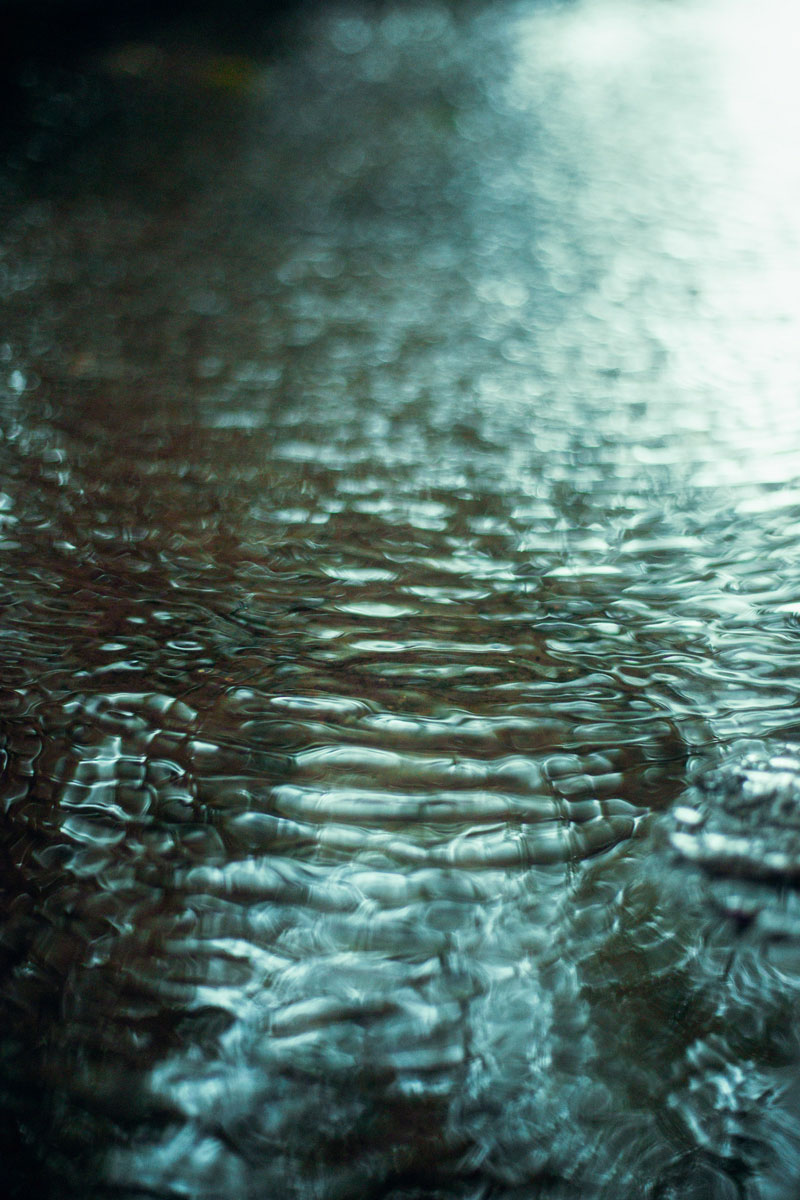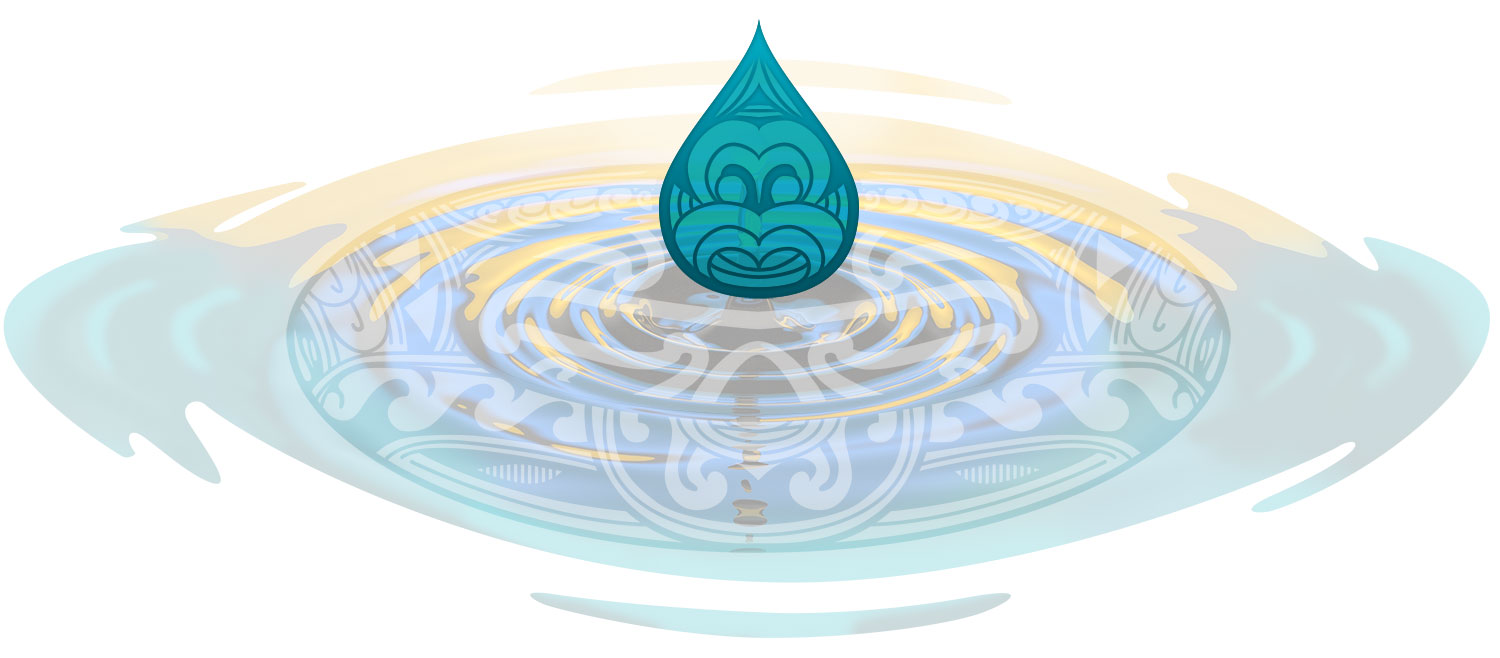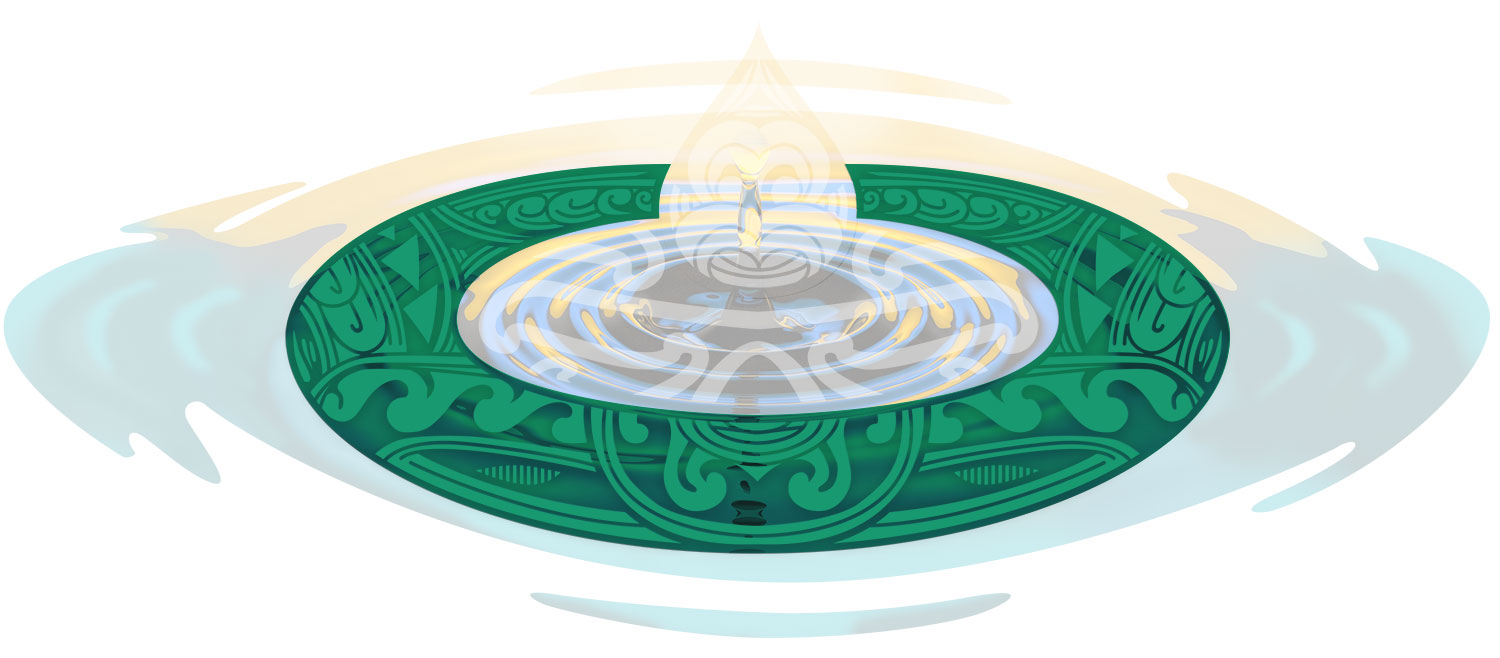Māori attitudes to water stem from whakapapa that traces beginnings to the separation of the primordial parents Ranginui (Sky Father) and Papa-tūā-nuku (Earth Mother).
In order for their children to live in the world of light, their son Tāne (God of forest and birds) separated his parents by propping is father up to become the heavens and pushing his mother below to become the earth. The perpetual grief between the two lovers is understood to be the first instances of water; rainfall is embodied as the tears of Ranginui for his wife, while the wellsprings and mist are the weeping of Papa-tū-ā-nuku for her husband (Morgan, 2006; Williams, 2006).
The whakapapa depicted traces the genealogy of water to the various atua and primordial parents; it is a granular whakapapa explanation for all forms of water and illustrates the Māori belief that we ultimately trace our ancestry to the rivers, creeks, streams and lakes as part of our ancient whakapapa lineage back to Rangi and Papa. Ranginui = Papa-tū-ā-nuku Tāne Tangaroa Rongo Tū-mata-uenga Haumia-tiketike Rū-ai-moko Tāwhiri-mā-tea (Forests, birds, (Sea, and sea (Vegetation) (War) (Uncultivated foods) (Earthquakes) (Elements) creation of man) creatures) Tāne = Hine-tū-pari-maunga (The mountain maid) Parawhenuamea (Waters of the earth) = Kiwa (Personification of the ocean) Hine-kohuHine-te-ihorangi Hine-parawhenuamea (Considered the daughters of all forms of water) Figure 1:
Whakapapa of water. Adapted from “God, man and universe: A Māori view” by M. Marsden, 2003a, in T. A. C. Royal (Ed.), The woven universe: Selected writings of Rev. Māori Marsden, pp. 2-23; J. Williams (2006) Resource management and Māori attitudes to water in southern New Zealand, The New Zealand Geographical Society, 62, p. 74 and Waka Huia (2016) Erina Kaui takes us down Te Wairoa river and reveals the genealogy of water. Sourced from http://www.etv.org.nz (Accessed 28 August 2018). 4 Based on Figure 1, the daughter of Tāne and Hine-tū-pari-maunga is Parawhenuamea, the tutelary deity of earthly or ground waters and the “personification of rivers and streams, especially flood waters” (Williams, 2006, p. 74).
The whakataukī, “nā ko Parawhenuamea koia te matua o te wai” translates to “Parawhenumea, the parent of water” (Best, 1976, p. 254). Her name reveals her primary function; ‘para’ is the rubbish, sediment, waste, vegetation or nutrients and ‘whenua’ means the land. Hence, Parawhenuamea personifies the deluge or floods that flush out the para from the land out into the ocean. Parawhenuamea is the wife of Kiwa, who personifies the ocean; estuaries are considered the shared domain where the couple meets (Heke, 2013; Williams, 2006). From their union, begat three daughters, Hine-kohu,Hine-te-ihorangi and Hine-parawhenuamea who represent other forms of water such as the rain and mist (Waka Huia, 2016; Heke, 2013).
The Wai Puna model draws on three core pillars: Whakapapa, (the first drop or mātāpuna, the source), Mātauranga (the inner ripple or tūpuna, the traditional knowledge) and Tikanga (the outer ripple, or mokopuna, representing engagement), as they pertain to wai.
Read more about Wai Puna

The source of water safety knowledge. Whakapapa is depicted in the koruru kaitiaki pattern (carved face), a representation of atua, and their importance for understanding our spiritual connection to wai (water).
.jpg)
The deepening of water safety knowledge. Mātauranga stems from whakapapa and is symbolised by the whakairo (carving) pattern known as puhoro – traditional knowledge. Tūpuna or ancestors are the caretakers of traditional knowledge.

The application of water safety knowledge.The last puna (mokopuna) is tikanga. The whakairo patterns within this outer ripple represent the various ways Māori engage with the water such as depicting waka sails for voyaging, fish scales (mahinga kai) and waves (recreation).